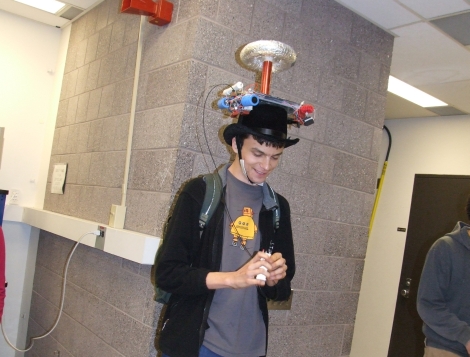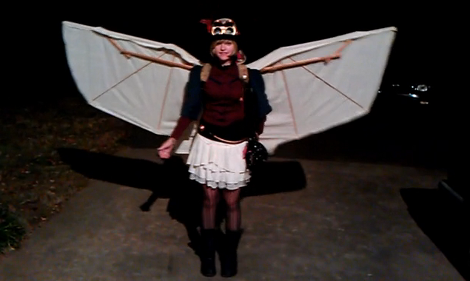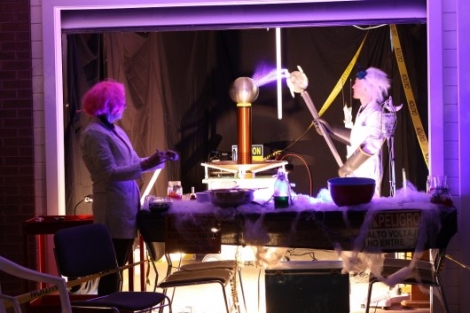We can hear the commercial now…
“Reeeeeeal men of geniuuuuuuus! Here’s to you Mr. no-fear, singing Tesla coil on your hat wearing guy…”
Call him a genius or call him crazy – all we know is that [Tyler’s] Tesla coil hat is awesome! Even though it’s the middle of November, we couldn’t pass up this Halloween costume.
[Tyler’s] creation essentially boiled down to taking a standard dual resonant solid state Tesla coil and shrinking it down to a reasonable size for mounting on his skull. The mini Tesla features a pretty compact boost core which worked reasonably well, at least for a little while. He says that the boost never truly worked properly and needs a redesign, which is something he’ll tackle when he gets some free time.
Boost issues or not, we think that the video below speaks for itself. The hat is certainly an attention getter, and we think it’s great – even if wearing a Tesla coil on your head is not necessarily the safest thing to do.
Continue reading “A Head-mounted Tesla Coil – What Could Possibly Go Wrong?”

















